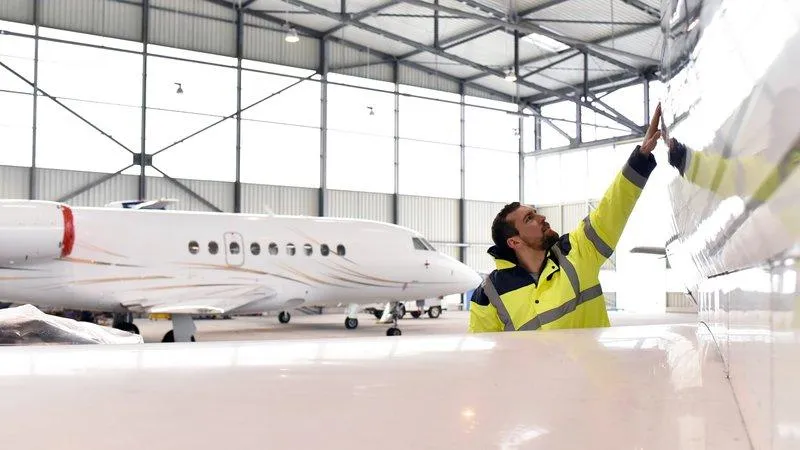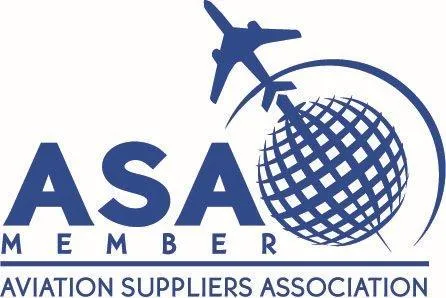
From Manual to Automated: The Rise of Digital MRO Inspections
Aviation maintenance is undergoing a significant transformation as the industry shifts from manual to fully digital MRO inspections. Maintenance, repair, and overhaul processes have historically relied on paper-based records, visual inspections, and manual reporting, leading to inefficiencies and compliance risks. Airlines, MRO providers, and lessors face mounting pressure to adopt smarter, faster, and more transparent inspection methods. Digital MRO inspections are rapidly becoming essential for ensuring airworthiness, operational efficiency, and regulatory compliance.
Legacy manual systems cannot keep pace with growing fleet sizes, increasingly stringent regulations, and heightened demand for operational transparency. Delayed inspections, misplaced records, and manual errors contribute to higher costs and operational downtime. Digital solutions offer a way to transform inspection processes by automating record management, defect detection, and compliance validation.
The Shift Toward Digital MRO Inspections
MRO inspections have traditionally relied on technician expertise, paper forms, and manual defect tracking. Technicians recorded maintenance findings by hand and then transferred the data into spreadsheets or disconnected databases. This process introduced human errors, delays, and significant risks during audits or asset transfers. Digital MRO inspections replace this fragmented approach with real-time, automated data capture.
Drones, borescopes, and handheld scanners now perform detailed inspections, capturing high-resolution images and videos for analysis. AI-powered systems automatically flag defects, such as cracks, corrosion, or dents, without requiring manual interpretation. Digital inspection reports eliminate subjectivity, providing accurate, time-stamped documentation for every maintenance event.
Automation also streamlines the integration of inspection data with maintenance planning systems. Findings are directly linked to task cards, work orders, and component histories, improving workflow efficiency. Digital MRO inspections enhance transparency by providing centralized access to accurate, traceable inspection records for regulators, lessors, and operators.
Benefits of Automation in MRO
Automating MRO inspections delivers immediate benefits in terms of efficiency, accuracy, and compliance. Automated image capture and AI-driven defect detection drastically reduce inspection cycle times while improving defect identification consistency. Unlike manual inspections, computerized systems do not suffer from fatigue, environmental distractions, or oversight.
MRO inspections become more consistent, repeatable, and auditable when driven by automation. AI models compare current images against baseline data, immediately detecting deviations that could indicate structural fatigue or damage.
Null maintenance processes. Faster turnaround times contribute directly to reduced aircraft downtime and operational costs.
Automation also reduces reliance on technician interpretation, lowering training costs and minimizing knowledge gaps. Complex inspections that once required highly specialized experience are now guided by standardized AI-driven workflows. Maintenance teams gain immediate access to historical data, inspection images, and defect trends through cloud-based platforms.
Regulatory compliance improves as automated inspections produce tamper-proof, timestamped reports. Each inspection step is fully documented, supporting airworthiness certifications, audits, and lease transitions with confidence.
How AI and Machine Vision Power Modern Inspections
AI and machine vision are at the core of automated MRO inspections. High-resolution cameras combined with advanced algorithms enable precise defect detection, classification, and trend analysis. AI-driven inspection tools process visual data much faster and more accurately than manual checks.
Drones conduct full airframe scans, generating detailed 3D models to detect dents, surface damage, or corrosion. Borescopes, integrated with machine vision, inspect internal components, such as engines, capturing defects that are invisible during external surveys. Machine learning algorithms continuously improve defect detection accuracy as more inspection data is collected.
Real-time analysis allows maintenance teams to receive immediate defect reports during inspections. Rather than waiting for manual post-inspection reviews, technicians act on AI-validated findings, accelerating maintenance workflows.
Improving Compliance and Traceability Through Digital MRO Inspections
Digital MRO inspections play a vital role in improving compliance, traceability, and audit readiness. Regulators demand comprehensive maintenance records that prove an aircraft’s continuous airworthiness and component integrity. Paper records often lead to missing documentation, non-compliance risks, and financial penalties.
Digital inspection platforms automatically capture and store detailed logs of every inspection event. Inspection data is linked to specific components, repair actions, and lifecycle histories, ensuring full traceability. Audit processes become more efficient because inspectors access centralized digital records rather than manually sifting through paper files.
Back-to-birth (BtB) traceability becomes seamless when inspections, repairs, and part replacements are fully documented in real time. Lessors and financial stakeholders benefit from transparent, verifiable asset histories that protect asset value and reduce disputes during lease transitions.
The Future of MRO Inspections Is Fully Digital
The future of MRO inspections is defined by greater automation, AI-driven insights, and integrated digital ecosystems. Predictive maintenance will become the industry standard as AI models analyze inspection data alongside operational performance and environmental factors to inform maintenance decisions. Instead of reacting to faults, airlines will prevent failures through predictive inspection insights.
Digital twins will play an increasingly important role in future inspections. Real-time virtual replicas of aircraft integrate with inspection data to continuously monitor structural integrity, usage fatigue, and component wear. Maintenance becomes predictive and dynamic rather than periodic and reactive.
Regulators are increasingly accepting AI-driven inspection outputs as part of compliance certifications. As digital inspections become more standardized, certification processes will shift toward automated audits supported by traceable digital logs.
Blockchain-based traceability will further strengthen inspection integrity, making it virtually impossible to alter or falsify records. As aviation supply chains adopt these technologies, operators gain unprecedented visibility into the provenance of components, lifecycle events, and maintenance status.
Future-Proof MRO Inspections with Proven Digital Solutions
ProvenAir empowers airlines, MROs, and lessors with a comprehensive digital traceability platform that supports automated MRO inspections. Our technology ensures comprehensive back-to-birth documentation, expedited compliance audits, and streamlined inspection workflows. Discover how ProvenAir transforms your inspection processes today.


